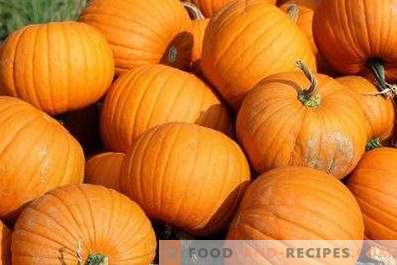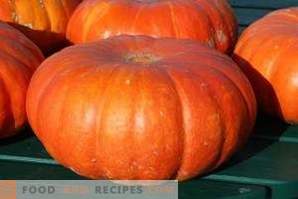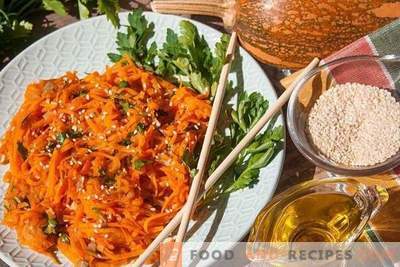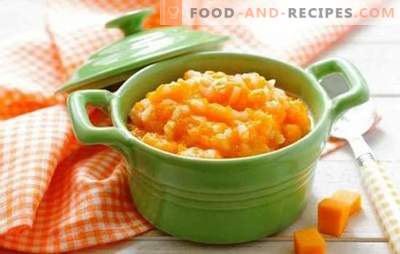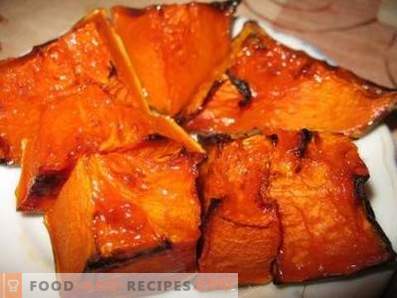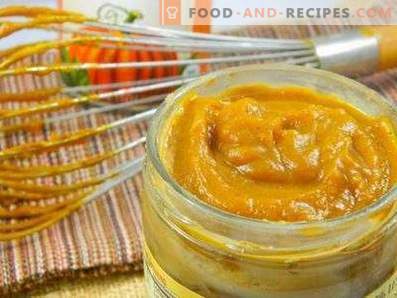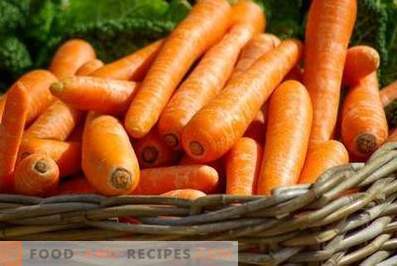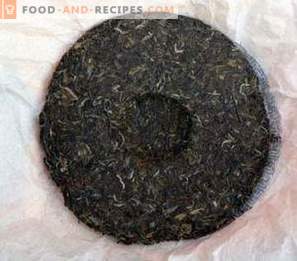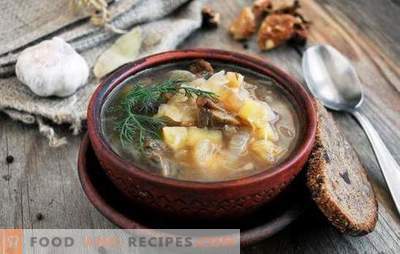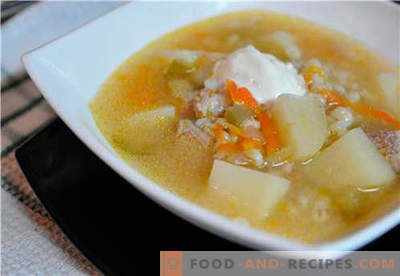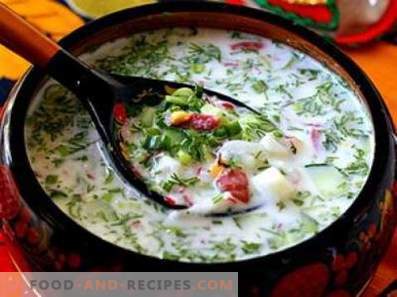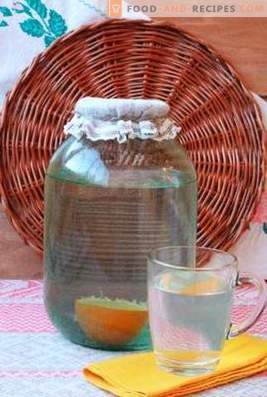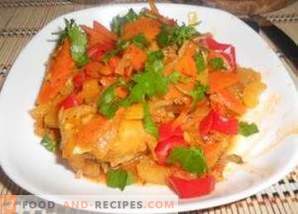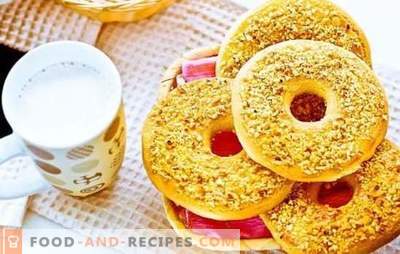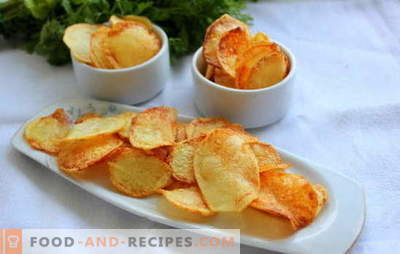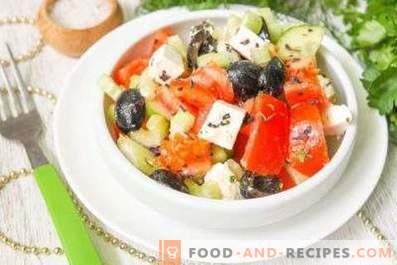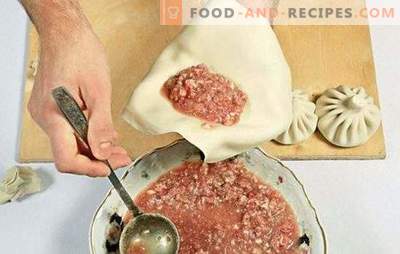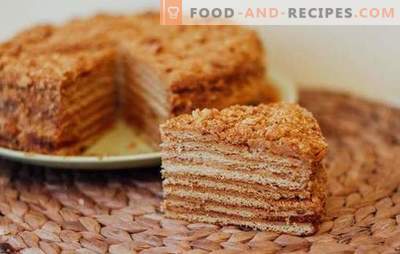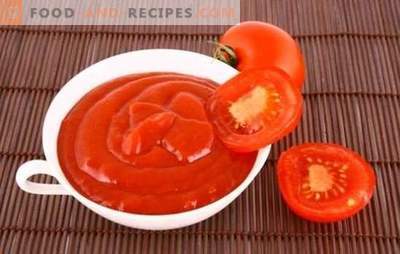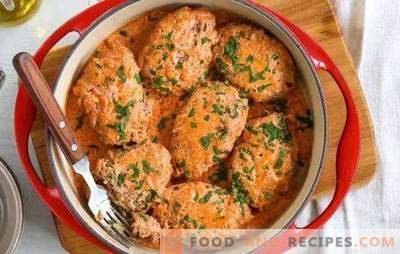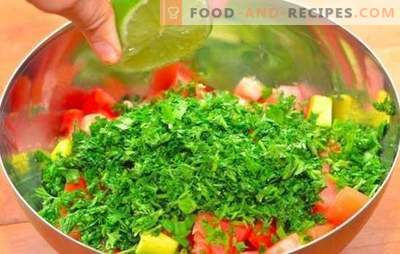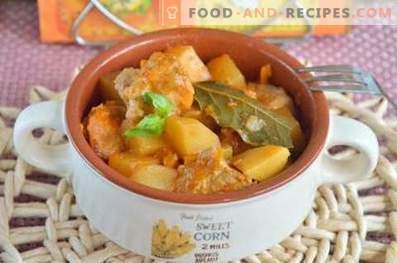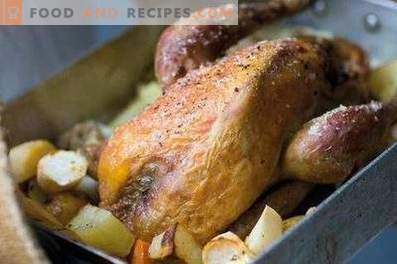
The common gourd, or pepo gourd, is a gourd crop, an annual herbaceous plant of the genus Pumpkin family. Fruits united by the name “zucchini” (elongated vegetables) and the name “squash” (flat discoid vegetables, scalloped at the edges) have become widely known.
The history of the cultivation of pumpkin begins with the Mayan era, that is, with the end of the fourth millennium BC. The Indians were convinced that the pumpkin is a healing berry and significantly prolongs life. The archaeological excavations of the third millennium BC suggest that this fruit has already become a stable crop and grown on a par with other vegetables. From the historic homeland - Ancient Mexico - pumpkin began to spread to other countries. On the cultivation of berries in Egypt and Ancient Rome is known from the works of Columella, Pliny the Elder and Petronius. In any era, the pumpkin was very popular, especially among the common people. For example, the Latin American Indians not only ate pumpkin pulp, but also turned the remaining hard skin into baths for babies. In ancient Rome and Ancient Greece, elongated fruits were used to make bottles for beverages. The inhabitants of ancient China also learned to use pumpkin as a material for creating containers for liquids. In the same place, talismans were cut from the rind of fruits for good luck, which often served as wedding gifts. Pumpkin was a symbol of prosperity and fertility for the family and home. In the Asian states, the berry was revered as sacred (in particular, in Cambodia, the Khmers worshiped a pumpkin, which, according to one legend, was the ancestor of humanity). Europe learned about the pumpkin only in the XVI century, this fruit ahead of the potatoes in the diet of the Slavs. One historical version says that the berry appeared due to merchants from Persia. Western Europe met the pumpkin a little later, where she immediately became very famous in all sectors of society. Since ancient times medicine has appreciated the unique properties of pumpkin. Fruits treated anemia, intestinal diseases and problems of the genitourinary system. The healers of some countries (Cambodia, Thailand, Laos) cannot do without pumpkins in magical rituals that drive away evil spirits, heal infertility and bring well-being.
The root system of this herbaceous plant is pivotal and consists of several branches. The stem reaches 5-8 meters in length and spreads along the ground. In the nodular ligaments rooting weak. The surface of the stem is rough and supplemented with spiny pubescence. The antennae are located in the axils of each leaf. In the section of the stem can be seen that at the base lies a pentahedron. Squashes and squash differ from the related pumpkin by a shorter stem. The leaves are arranged next to each other and secured on long petioles. They can be heart-shaped, five-lobed or five-segmented. Such plates are drawn up to 25 cm in length, their surface is protected by small, hard hairs. Large pumpkin flowers grow singly, belong to same-sex. The color can be orange (like fruit) or yellow. Male flowers are located on elongated pedicels, and female - on small ones. The corolla 5-8 cm long unfolds in the form of a funnel up to 6-8 cm wide and ends with five even teeth. Pollination occurs cross, taking part in this bee and some other insects. Pumpkin flowering occurs in early-mid summer. The fruit is a very large berry with a smooth surface and fleshy pulp. The shape, depending on the variety, may resemble a ball or an elongated oval, and the color varies from yellow to dark orange. Inside the pumpkin there are a lot of seeds, and outside the fruit is covered with a hard crust. The size may be different for pumpkins of different varieties. Harvesting is done in August and early autumn. Flat pumpkin seeds grow up to 3 cm and are equipped with a rim around the edge; their outer shell is hard like a tree and has a white-yellowish tint, and inside is a membranous part of gray-green color. Dry weather in early September (the so-called “Indian summer”) is the most favorable time for gathering ripe pumpkins. The ripeness of the fruit is evidenced by the bright color of the peel and the dried stem. When picking a berry, it is important to leave 8-10 cm of the stalked stem, so that the pumpkin is fresh longer and does not rot. Room temperature and darkness allow you to save the fruit for a period of a couple of months to a year.
Now humanity is familiar with about ten varieties of pumpkin. Fruits are divided into edible (used in cooking and medicine) and technical (to create containers, dishes and even musical instruments). Now the berry is grown almost everywhere except in the cold arctic climate.
Food and vitamin value of pumpkin
Pumpkin is a very valuable dietary value products. It is the most important source of biologically active components. The fruits contain well-digested proteins, carbohydrates, pectin substances, starch, vitamin complexes, mineral salts, etc. The exact composition of the berry depends on the conditions of growing pumpkins and methods of processing fruits. Dietary and important for baby food properties of pumpkin were not immediately evaluated according to merit. The flesh is especially useful in winter, when it is difficult to find other vegetables and vitamins.
Pumpkin contains from 85 to 94% of water. The dry matter most (up to 15%) in the varieties Kherson, Slavuta, Almond, Zhdana. Slightly less (8-11%) is in the variety Ukrainian Multiple, Lel and Valok. The carbohydrate content of the berry is mainly due to the presence of polysaccharides. The sugar content is different in different varieties. The sweetest are those species with the most dry matter (Slavuta, Kherson, etc.). They can detect non-standard 4-8% sugar, and approximately 11-14%, this indicator includes about 8% sucrose. The sweetness of pumpkin especially increases after storage during the winter. Starch in the pulp is from 3 to 15%, and during storage this component turns into soluble sugars. The high content of sugar and low organic acids allows you to use pumpkin as a raw material for confectionery production (for example, fruit is made from fruit candy and candied fruits). The pulp of the described product contains relatively little protein component (approximately 1%, sometimes even 0.5%), but a high concentration of pectin (3-14%) helps the fruit to quickly remove cholesterol from the body. For comparison, we can say that the cabbage and carrots contain only 0.5% pectin. The amount of propectin in the pumpkin is also very large and is comparable to its content in lettuce, green onions, beans and table beets. There is very little fiber in the berry (0, 3-1, 1%), it is quickly boiled soft, not weighted with fibers and is absorbed very effectively in the form of mashed potatoes.
This fruit is the most important source of carotene and this stands out among many representatives of the plant world. Specially bred varieties provide from 5 to 20 kg of carotene per hectare. 100 grams of pumpkin of some varieties (Marble, Arbat, Vitamin) contain 15-20 mg of carotene, in rare cases this value reaches 35-38 mg. The quantity of carotenoids in a berry is the greater, the brighter the pumpkin pulp is colored orange. It is noticed that in table fruits ripening in late periods, the concentration of carotene increases over several months of storage. Pumpkin is 15 times more than watermelon in the content of this component, and melon - 4 times. To get the daily rate of carotene, it is enough to eat only 50 grams of pumpkin. For this reason, this berry is actively used by enterprises that produce carotene concentrates.
Nutritional value 100 g pumpkin:
- 1, 603 g of proteins
- 0, 145 g of fat
- 4, 451 g of carbohydrates
- 2, 087 g of dietary fiber
- 91, 842 g of water
- 0, 126 g of organic acids
- 4, 253 g of monosaccharides and disaccharides
- 0, 676 g of ash
- 0, 241 g of starch
Pumpkin is very rich in vitamins, the presence of which prevents disturbances in appetite, functioning of the nervous system and digestion. Vitamins per 100 g of pumpkin:
- 1, 565 mg of beta-carotene (vitamin A provitamin)
- 250, 072 μg of retinol equivalent (A)
- 8, 363 mg of ascorbic acid (C)
- 0.058 mg of thiamine (B1)
- 0, 065 mg of riboflavin (B2)
- 0, 409 mg of pantothenic acid (B5)
- 0, 103 mg pyridoxine (B6)
- 14, 794 μg of folic acid (B9)
- 0, 472 mg of tocopherol (E)
- 0, 567 mg of vitamin PP
- 0, 782 mg of niacin equivalent (PP)
Pumpkin calories
In the described berry there are very few calories - about 20 per 100 grams. The energy value varies from different pumpkin varieties. Species with a high sugar content are always more nutritious than less sweet varieties.
- Raw pumpkin contains 22 kcal per 100 g.
- Boiled pumpkin contains 24 kcal per 100 g.
- Baked pumpkin contains 27 kcal per 100 g.
- The stewed pumpkin contains 24 kcal per 100 g.
Boiled pumpkin is characterized by a very low energy value - about the same as raw. To prepare the dish, boil small pieces of pumpkin in salted water for 30 minutes and then drain the liquid through a colander. This is the best way to use pumpkin for those who are trying to lose weight.
When baking pumpkin pulp compacted, so 100 grams of baked product contain more calories than the same amount of boiled berries. The energy value of 27 calories, however, is considered quite low, so baked pumpkin fits perfectly into the diet menu. Many people appreciate its pronounced taste, but additives in the form of dough, meat, sugar significantly increase the calorie content of the dish.
Stewed pumpkin and steamed pumpkin are equivalent in energy value to the cooked product. Such methods of preparation allow you to save the maximum amount of useful components of the fruit and make the dish taste good.
Macro and trace elements in the composition of the pumpkin
Pumpkin is extremely rich in mineral salts and macronutrients. The highest indicators are characterized by the content of potassium, iron, calcium and phosphorus. In the pulp, you can find about 10 mg of sodium salts, 15 mg - magnesium, 3, 2 mg - copper and 0, 15 mg - cobalt salts.
Macroelements per 100 g of pumpkin:
- 25, 485 mg of calcium (Ca)
- 204, 477 mg of potassium (K)
- 14, 337 mg of magnesium (Mg)
- 25, 723 mg of phosphorus (P)
- 4, 453 mg of sodium (Na)
- 19, 938 mg of chlorine (Cl)
- 18, 094 mg of sulfur (S)
Trace elements per 100 g of pumpkin:
- 0, 398 mg of iron (Fe)
- 0, 245 mg of zinc (Zn)
- 1, 095 mcg of iodine (I)
- 180, 396 μg of copper (Cu)
- 0, 048 mg of manganese (Mn)
- 86, 564 μg of fluorine (F)
- 1, 084 mcg cobalt (Co)
Useful properties of a pumpkin
- Pumpkin is extremely rich in carotene. The content of this component is greatest in varieties with bright orange pulp. It is beta-carotene that gives the fruit such color.
- Medicine highly recommends the use of pumpkin for cardiovascular diseases and high blood pressure.
- Pumpkin pulp and juice are very rich in fiber, which significantly alleviates the condition of constipated. Thanks to cellulose and the diuretic capacity of the fetus, slag substances, excess fluid, excess salt are removed from the body, and metabolic processes return to normal.
- In case of disorders of the gastrointestinal tract and increased acidity of the gastric juice, any pumpkin dishes are excellent.
- For chronic insomnia, pumpkin juice or honey pumpkin broth, drunk at night, can help out.
- The choleretic and diuretic capacity of the pumpkin greatly facilitate the work of the liver and gallbladder.
- Cosmetology actively uses the beneficial properties of a pumpkin to heal wounds and microcracks on the skin, to improve its color. Mixtures of this berry are necessary for dry and dull skin. In pumpkin oil, which is obtained by cold pressing from seeds, many fatty acids are important components of the epidermis membranes. Therefore, this fluid is actively used to relieve irritation, dryness and inflammation of the skin.
- Vitamins and minerals in the pulp of the pumpkin help strengthen the immune system.
- For pregnant women, the described berry is attractive because of its ability to suppress nausea and toxicosis.
- High concentration of potassium and its compounds stabilizes the work of the heart and blood vessels.
- Eastern medicine actively recommends pumpkin juice. The drink quenches thirst and fills the body with energy. A glass of such juice in the evening makes the impending dream deep and calm. Spoon pumpkin juice is a mild diuretic and choleretic agent. Drinking this fluid during the week treats kidney diseases (the juice should be drunk from the raw pulp of the berry). Colitis and chronic constipation are also negated if you drink pumpkin juice after a meal. The drink also helps with diseases of the throat and can, in combination with rose oil, reduce ear pain.
- Pumpkin seeds cope with acne and dandruff. To this end, you need to take a tablespoon of peeled seeds on an empty stomach. In combination with milk, honey or fruit juice, pumpkin seeds are transformed into an effective tasty remedy against worms, which is especially important for children. This tool is not dangerous in any portions. Pumpkin seed gruel can heal dermatitis and burns.
Contraindications to the use of pumpkin
- Pumpkin has an alkalizing effect. Therefore, it should not be used in the case of gastritis with low acidity and other violations of the acid-base balance.
- Fruits should not be used for gastric ulcer and small intestine.
- For severe forms of diabetes, it is best to use a pumpkin only after consulting with your doctor.
